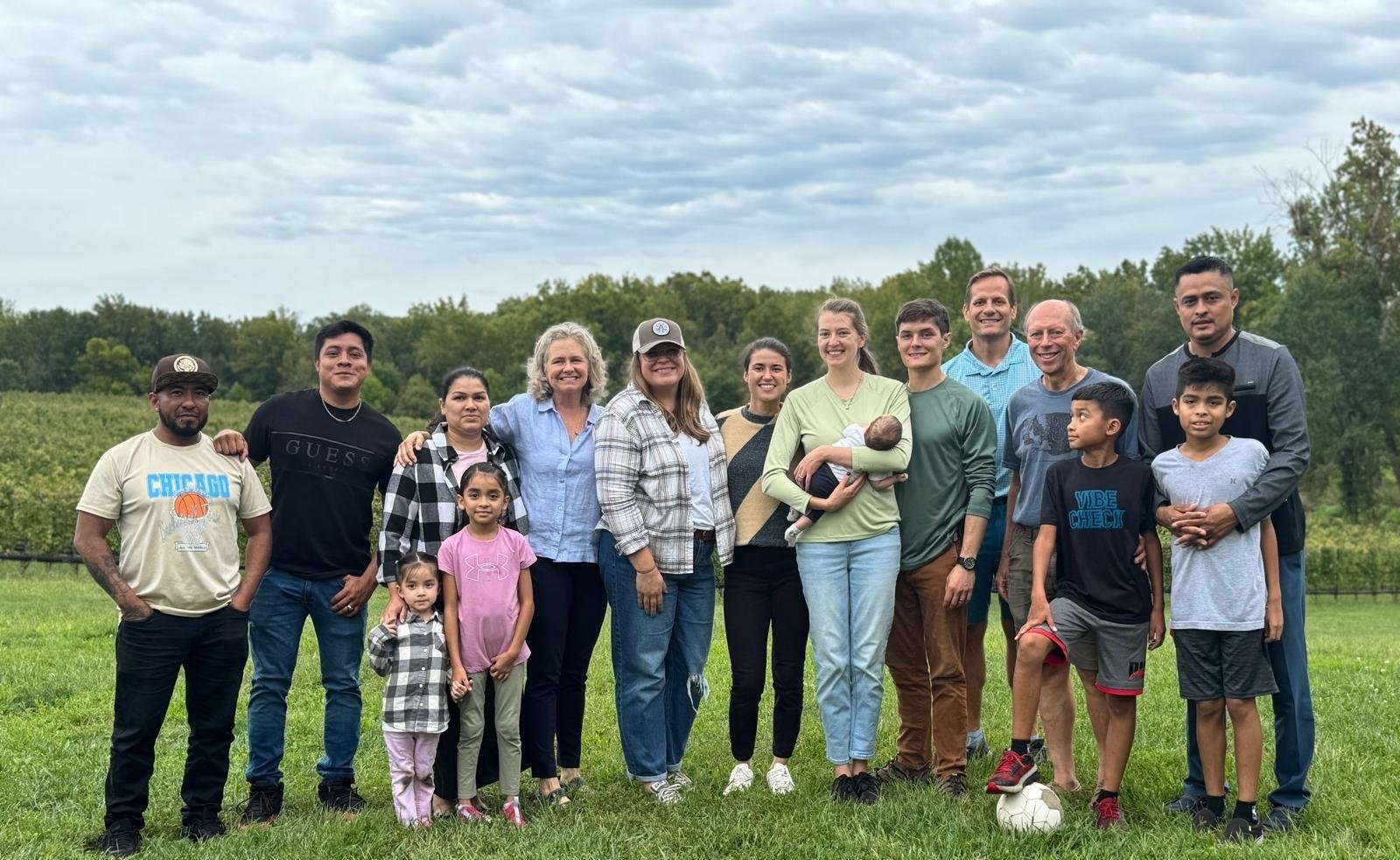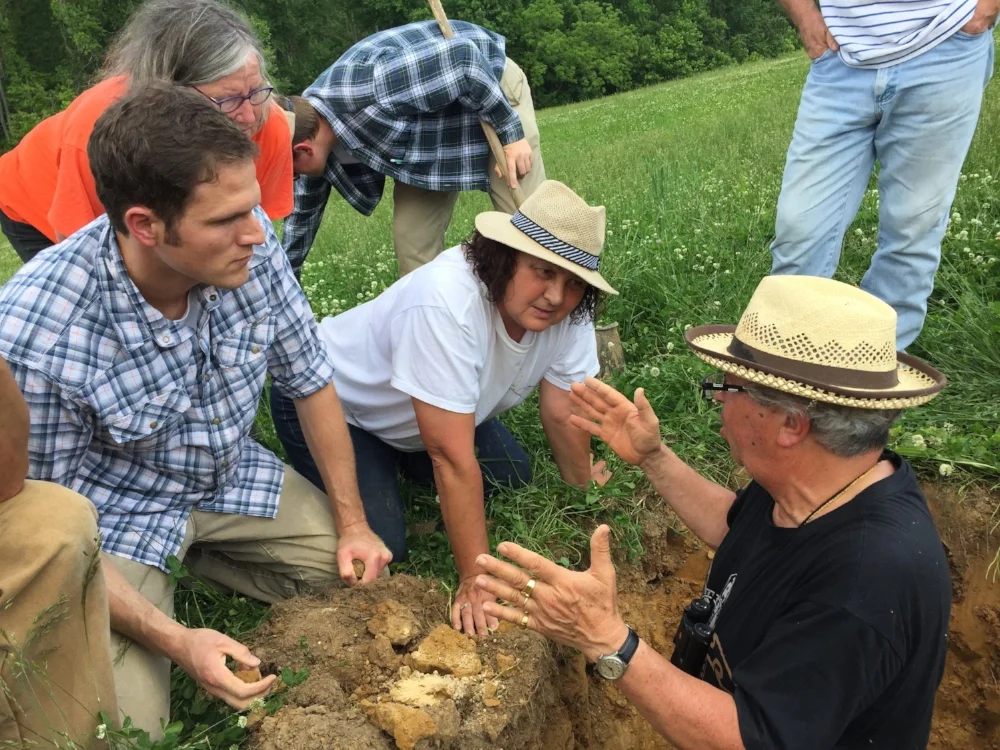Just as we aim to farm in the service of nature, we seek to farm in the service of our community. In the spirit of reporting to our community “shareholders,” I offer this 2024 review. It’s lengthy, but there is much to report: a fantastic harvest, widespread recognition of our environmental approach, and the slow emergence of plans for our next chapter.
The Vineyards at Dodon is now on iNaturalist App
Living, vibrant ecosystems are crucial to achieving our environmental, community, and winemaking goals. Over the past decade, we have implemented farming practices that encourage diverse native and naturalized plants in and around the vineyard while discouraging invasive plants that can easily dominate the landscape and provide habitat for detrimental insects.
Farming in Service of Nature
Loss of biodiversity may be humanity’s greatest threat, even more than climate change. Food production is the primary cause. At Dodon, we seek to reverse this trend and thus enhance the ecosystem services that will allow us to reduce our physical and chemical footprint…
2019 Vintage Summary: Tranquility and Transformation
Things may have seemed simple in 2019, but they were not.
After the rains of 2018, the 2019 vintage brought welcomed change. Unusually dry weather that started in mid-July helped make the harvest, at first blush, delightfully simple. The vines politely stopped growing at veraison, focusing their energy on ripening the fruit. The vineyard team was, well, in the vineyard, the work progressing quickly and efficiently. Picking, sorting, and processing seemed almost effortless. The wines made themselves.
Climate Change, Part 2: A New Year’s Resolution
As a farmer and grape grower, the effects of climate change are hard to miss, and the news is getting worse. Even the best-case projections regarding temperature, sea level rise, floods, fire, disease, and agricultural output are frightening. Partly due to changes in the climate, extinction rates among all species are about 1,000 times greater than they would be in the absence of human activity. Pulitzer prize winning author Elizabeth Kolbert has called this phenomenon The Sixth Extinction.
Climate Change, Part 1: A Christmas Wish
Polly and I are spending the holidays with our granddaughter, Juana Magdalena, in a little town called City Bell, just east of Buenos Aires. Polly’s three daughters are all here too, almost as much fun as Juana. As the summer solstice passes, our days are filled with family, exercise, asados, newspapers, a bit of sightseeing, and, for me, Spanish lessons. There is a fruit and vegetable farm within walking distance, and freshly butchered meat and chickens on the way, with none of the planting, weeding, feeding, watering, and picking chores of farm life.
2018 Vintage Summary
Tuesday, October 2 was a beautiful, if somewhat warm, autumn day – the kind of day that we hope for in early October, when we are typically just starting to pick the black grapes. But this, the final day of picking in 2018, signaled the perplexing character of the vintage. The image of Dodon’s weather vanes pointing toward each other on an otherwise lovely morning is its lasting symbol.
Looking Beyond Organic Agriculture: Part II, Biodynamic Agriculture
In my last post on organic agriculture, I discussed the importance of balance in the vineyard, especially in the soil where microbes play a critical role in creating a healthy environment for plant growth. This notion of ecological balance is central to a form of organic agriculture known as biodynamics.
What are Dodon Soils?
Dodon’s soils substantially differ from those in other wine growing regions. Termed Marr-Dodon complex soils, they are described as fine-loamy (meaning smallish particle size), siliceous (having high levels of silica that warms the soil), semiactive (modest cation exchange associated with low fertility), mesic (medium temperature), aquic (Dodon series) or typic (Marr series) (aquic soils retain more water than typic) hapludults (derived from sandstone).
Why do we care so much about Dodon soils?
Grapevines grow just fine in water supplemented with a few nutrients, a method known as hydroponics. Growing hydroponically has lots of advantages. Because it can be done indoors, hydroponics allows perfect temperature control, and it avoids disease pressure often associated with rain, humidity, and insects. Vegetative growth can easily be regulated by adjusting the amount of carbon dioxide in the atmosphere and the amount of nitrogen in the aqueous solution. It’s little wonder that tomatoes, lettuce and other vegetables, and most commercial marijuana are grown hydroponically.
Looking Beyond Organic Certification: Part I
I’m often asked when leading guests on a tour in the vineyard whether Dodon is “organic,” or at least aspires to be certified as an organic vineyard. It’s a fair question. In many ways, we fit the common image of organic farmers. On a summer visit, you will find our vineyard team out with hoes, clippers, and other hand tools, carefully cultivating the soil and tending the vines. Regulations governing organic certification require practices that are standard operating procedures at Dodon, such as use of organic composts, mechanical weeding, and use of biological controls for insect pests. These methods are labor intensive and expensive, and they illustrate our commitment to sustainability, ecologically-friendly practices, and a balanced ecosystem.
One Winegrower's Take on GMOs
Support for genetically modified organisms or GMOs got quite a boost this summer when the National Academy of Sciences released their most recent report on GMOs, concluding that, compared to “conventionally” farmed crops, GMOs have had generally, but not uniformly, positive effects on producer income and that they are safe to eat. To be sure, the NAS committee comprehensively reviewed the literature comparing GMOs with conventionally farmed crops, so from this perspective, it fulfilled its narrow statement of task. But many winegrowers will view the scope of the report as limited, comparing two largely technologically driven agricultural methods but leaving out more ecologically-based methods that rely on diversified ecosystems to improve quality and increase yields.
Are Time and Terroir an Illusion? Reflections on Mark Matthews’ new book, Terroir and Other Myths of Winegrowing.
Issac Newton described time in absolute terms that I find intuitive. It is the same everywhere, it has constant duration, and it flows continuously in the same direction. According to Craig Callender, Professor of Philosophy at University of California, San Diego, Newtonian time is a kind of master clock that carves our world into instants.
Dancing with Nature
We are often asked in the depth of winter about the effect of cold temperatures on the vines. Usually, the answer is that cold weather during winter dormancy is good for them. Chardonnay and Merlot are the least cold hearty varieties at Dodon, and even these tolerate temperatures as low as -3 degrees F before there is any bud loss.








